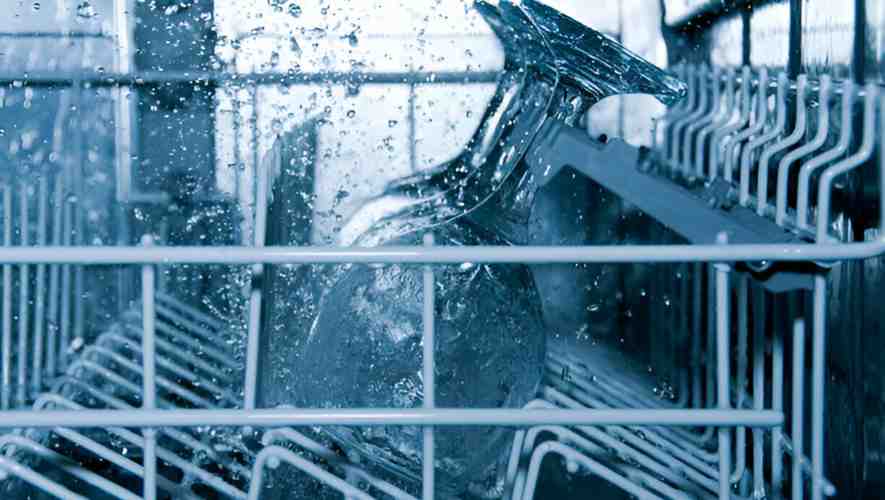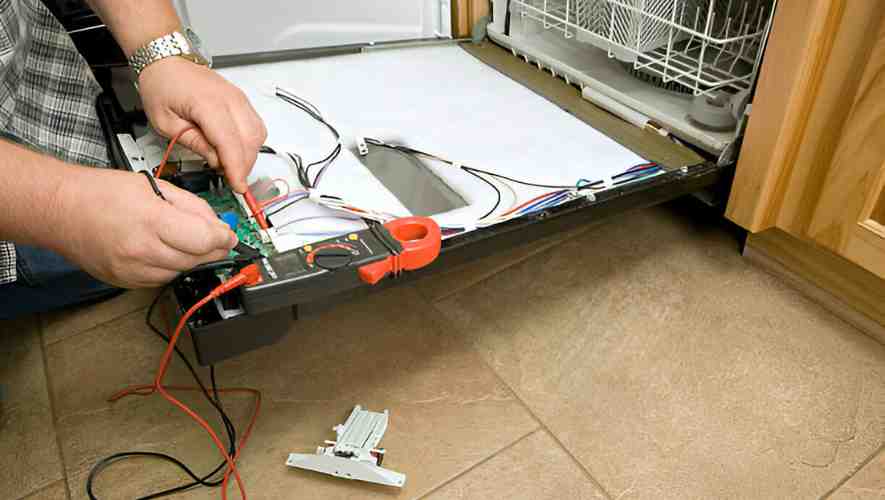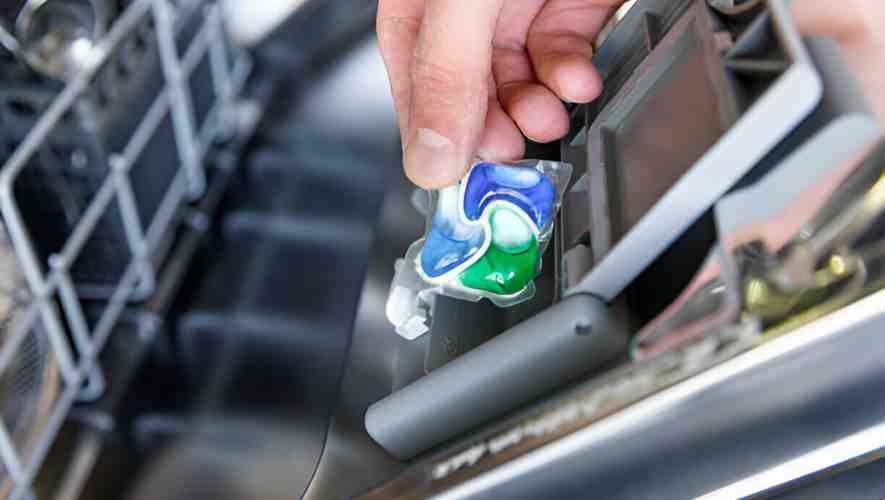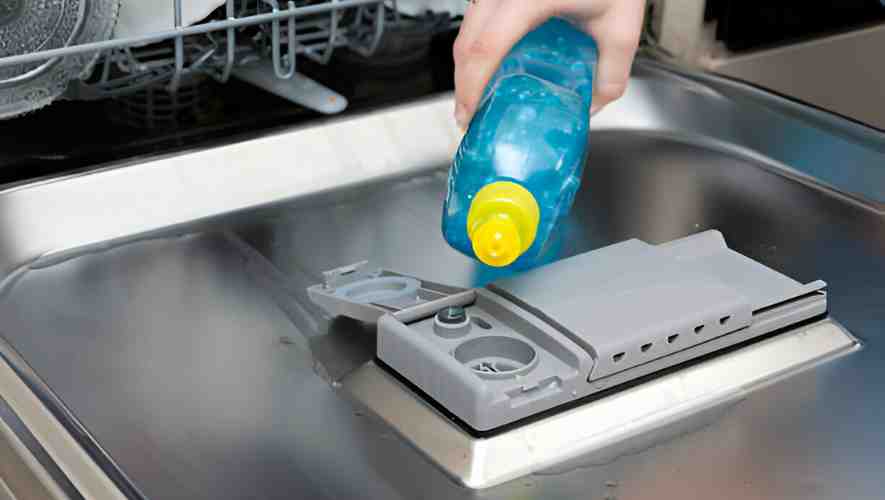
why your dishwasher isn’t getting your dishes dry? It’s super frustrating to open the door and find that your dishes are still wet. You expect a dishwasher to clean and dry everything, right? But sometimes, things don’t go as planned, and your dishwasher is not drying your dishes as it should. So, what’s going on? There could be a few reasons your dishwasher is leaving you with wet dishes. It might be a simple fix, like adjusting the settings, or it could be something more serious that needs a bit of troubleshooting. Let’s dive into why your dishwasher is not drying and what you can do to fix a dishwasher that doesn’t get your dishes clean and dry.
1. Why Is My Dishwasher Not Drying Dishes? Check the Heating Element and Vent

Dishwasher isn’t drying your dishes properly, it can be really annoying. Let’s dig into some reasons why your dishwasher isn’t doing its job and how to fix it.
Check the Heating Element
One of the main reasons why your dishwasher isn’t drying your dishes is a faulty heating element. The heating element is crucial for drying dishes properly. If the heating element isn’t working, your dishes won’t dry, no matter what setting you use.
- Locate the Heating Element: It’s usually at the bottom of the tub. Open your dishwasher and look for it.
- Testing the Heating Element: Use a multimeter to check if the heating element isn’t working. If it’s broken, you’ll need to replace it.
Vent and Airflow Issues
Another reason why your dishwasher may not be drying properly is a problem with the vent. The vent allows hot, moist air to escape during the drying cycle. If it’s blocked, your dishes aren’t drying properly.
- Check the Vent: Ensure there’s no debris blocking it. Sometimes, cleaning it can improve drying performance.
- Airflow: Make sure there’s enough space between your dishes for air to circulate.
Improve Drying Performance
To help dry your dishes properly, try these tips:
- Rinse Aid: Use a rinse aid to reduce excess water on dishes.
- Dry Option: Always select the heated dry option on your dishwasher.
- Condensation Drying: Some dishwashers use condensation drying, so leaving the dishwasher door open at the end of the cycle can help.
- Dry Setting: Make sure you’ve selected the appropriate dry setting on your appliance.
Proper Loading Techniques
How you load your dishwasher can affect its drying performance:
- Dishwasher Racks: Load dishes properly on the dishwasher racks.
- Top Rack and Bottom Rack: Place plastic items on the top rack to avoid melting and heavier items on the bottom rack first.
- Space Between Dishes: Ensure there’s enough space between your dishes for proper airflow.
Unload the Bottom Rack First
When unloading, start with the bottom rack first. This helps prevent any water from the top rack from dripping onto the dishes below, keeping your dishes dry.
Regular Maintenance
Regularly maintain your dishwasher to ensure it’s working efficiently:
- Clean the Tub: Wipe down the tub to remove any buildup.
- Check for Blockages: Make sure nothing is blocking the spray arms or the vent.
2. How to Get Dishes Dry in the Dishwasher: Rinse Aid and Dry Cycle Tips

Frustrated with wet dishes after running your dishwasher? Let’s look at some easy tips to help improve drying performance and get your dishes dry every time.
Use Rinse Aid
Rinse aid is a game-changer when it comes to drying dishes. It helps prevent the dishwasher from leaving water spots and aids in the drying process.
- Add Rinse Aid: Make sure your dishwasher has enough rinse aid. Check the dispenser and fill it up if it’s low.
- Benefits: Rinse aid helps the water slide off your dishes, making them dry faster and preventing those annoying spots.
Select the Right Dry Cycle
Choosing the right cycle can make a big difference in how dry your dishes get.
- Heat Dry: Always select a heat dry option if your dishwasher has one. This uses extra heat to dry your dishes effectively.
- Extended Dry Cycle: Some dishwashers have an extended dry cycle for even better results. Use this setting for optimal cleaning and drying.
Proper Loading Techniques
How you load your dishwasher affects airflow during the drying cycle, which is crucial for getting your dishes dry.
- Spacing: Make sure your dishes are not overcrowded. Leave enough space between them to allow air to circulate.
- Top Rack and Bottom Rack: Place larger items on the bottom rack and smaller or plastic items on the top rack to prevent them from melting and to allow better airflow.
Open Your Dishwasher Door
Opening the dishwasher door at the end of the cycle can help with drying.
- Let Air Circulate: Once the wash cycle is complete, open your dishwasher door slightly to let the steam escape. This helps increase the air temperature in the dishwasher and speeds up drying.
- Avoid Splashing: Be careful not to open it too wide, as this could cause water to splash onto the dishes.
Regular Maintenance
Keeping your dishwasher in good condition helps improve its performance.
- Clean the Dishwasher Tub: Regularly clean the dishwasher tub to prevent buildup that can affect drying.
- Check for Blockages: Make sure nothing is blocking the spray arms or vents. This ensures proper water flow and heat distribution.
Additional Tips
A few more tips to ensure your dishes dry properly:
- Hot Water: Run the hot water in your sink before starting the dishwasher to ensure the water entering the dishwasher is hot from the start.
- Unloading: When unloading, start with the bottom rack first. This prevents any water from the top rack from splashing onto the dishes below.
- Prevent Water Spots: Using a high-quality detergent along with rinse aid can help prevent water spots.
3. Reasons Your Dishwasher Is Not Drying Properly: From Detergent to Dishwasher Door

If your dishwasher is leaving your dishes wet and they’re not dry after a dishwasher cycle, it can be really frustrating. One common reason for this is a malfunctioning dishwasher heating element. The heating element is responsible for generating the heat needed to dry your dishes and utensils. If it’s not working properly, your dishes may not dry completely.
Another reason could be the vent. Many dishwashers use a vent to release steam and hot air during the drying process. If the vent is blocked or not functioning properly, your dishes will stay damp. Make sure to check the vent to ensure it’s clear and working as it should. Some dishwashers also have a drying fan that helps circulate hot air. If the fan isn’t working, your dishes will remain wet.
Detergent can also play a big role in how well your dishes dry. Using the right amount of detergent helps ensure clean dishes, and it can also improve drying. Too much detergent can leave residue, which makes it harder for dishes to dry in the dishwasher.
Proper loading of the dishwasher is essential too. If dishes are too close together, air can’t circulate properly, and they’ll stay wet. Make sure there’s enough space between dishes and utensils to allow for proper airflow.
The rinse aid is another key factor. It helps water slide off dishes more easily, which speeds up the drying process. If you’re not using rinse aid, your dishes may still be damp when the dishwasher completes its cycle.
Lastly, the dishwasher door itself can affect drying. If the door doesn’t seal properly, it can let out heat and steam during the cycle, leaving your dishes still wet. Make sure the door closes and seals tightly.
Conclusion
Dishwasher is not drying dishes and they’re still damp at the end of the cycle, don’t worry. Start by inspecting your dishwasher’s heating element and vent, making sure they are functioning correctly. Also, check your detergent and rinse aid usage, as they play a significant role in the drying process. Properly load your dishwasher to allow for good airflow, and ensure that the door seals tightly. By following these tips, you can improve your dishwasher dry performance and enjoy clean, dry dishes every time.
